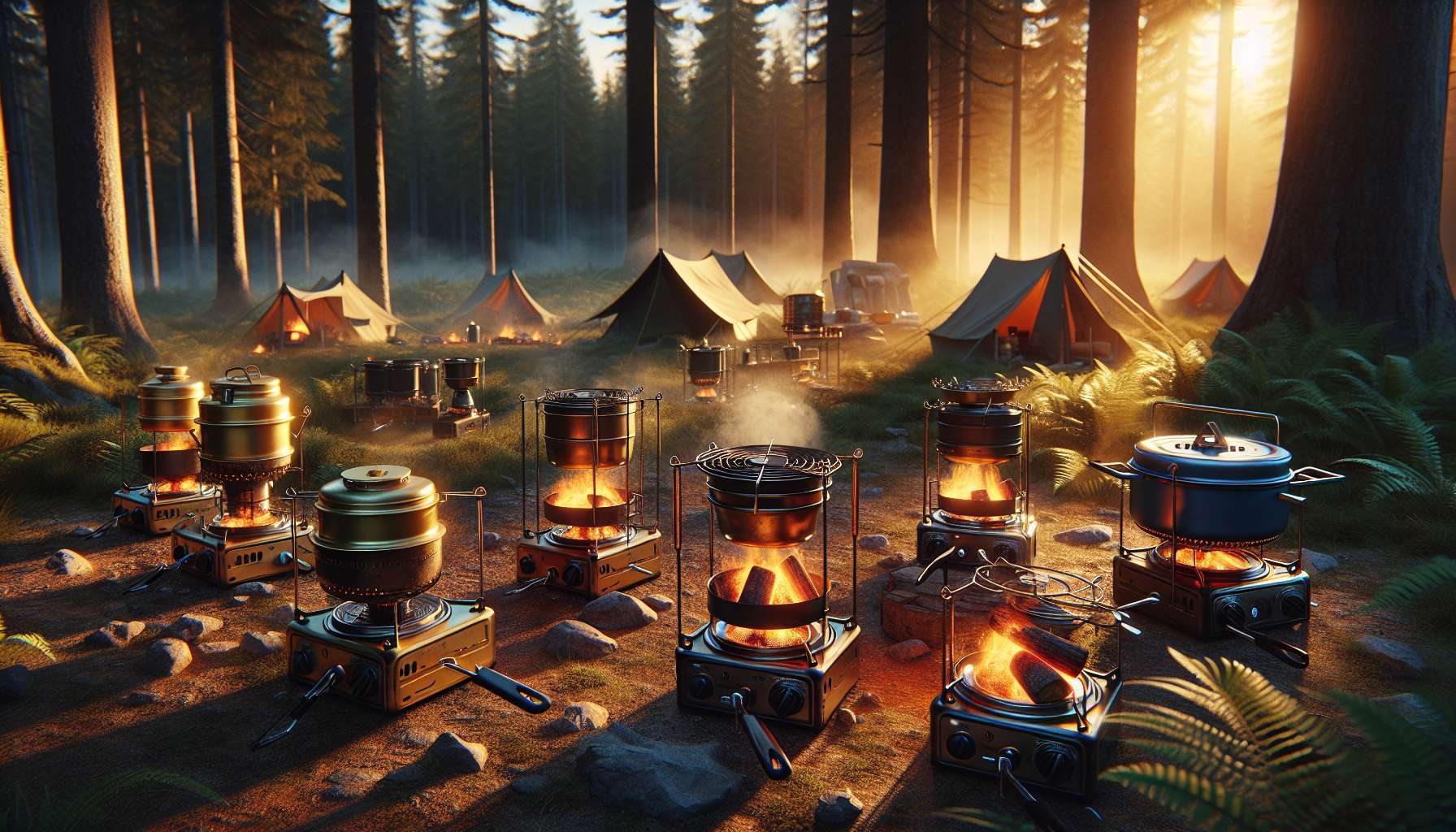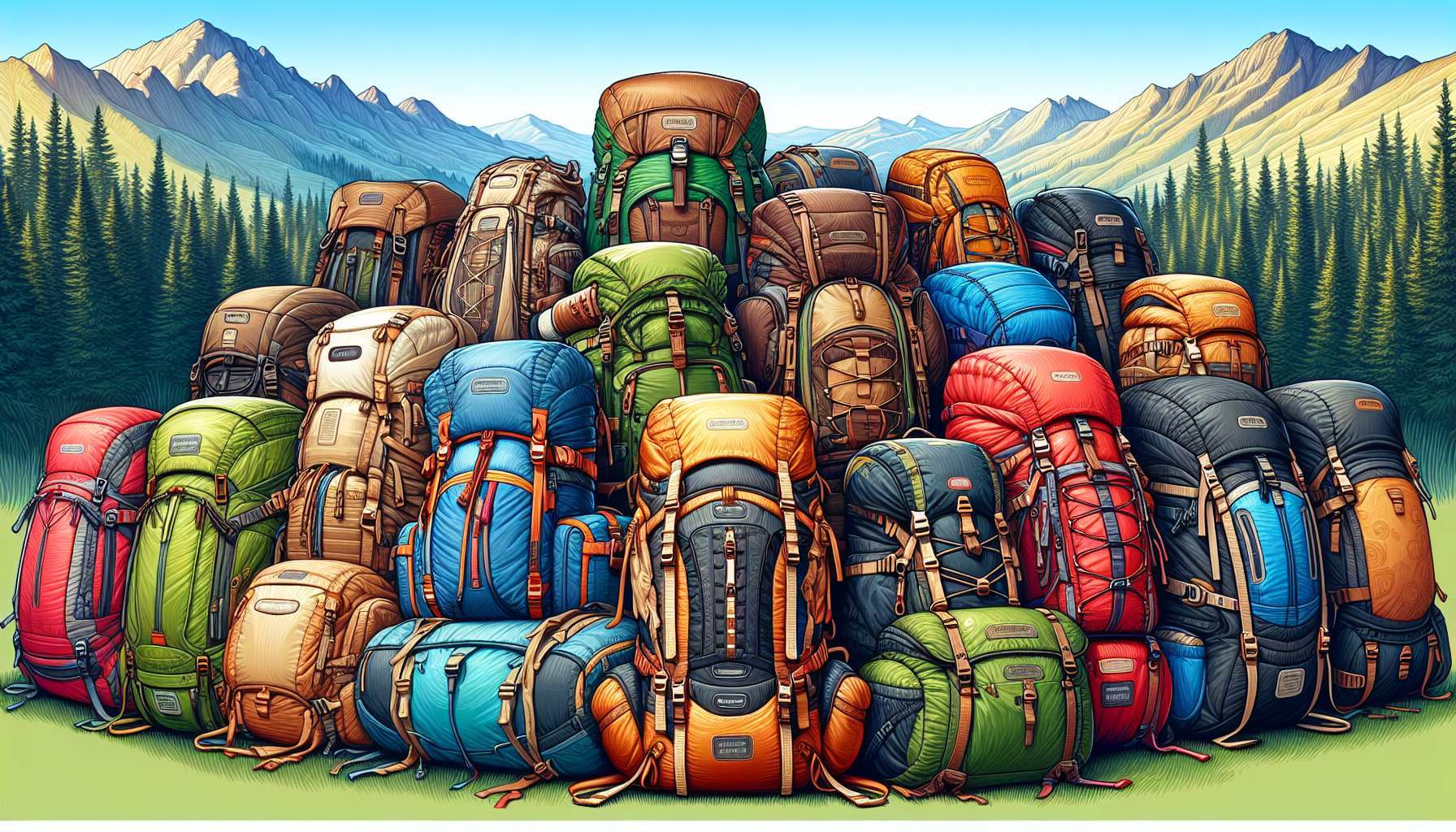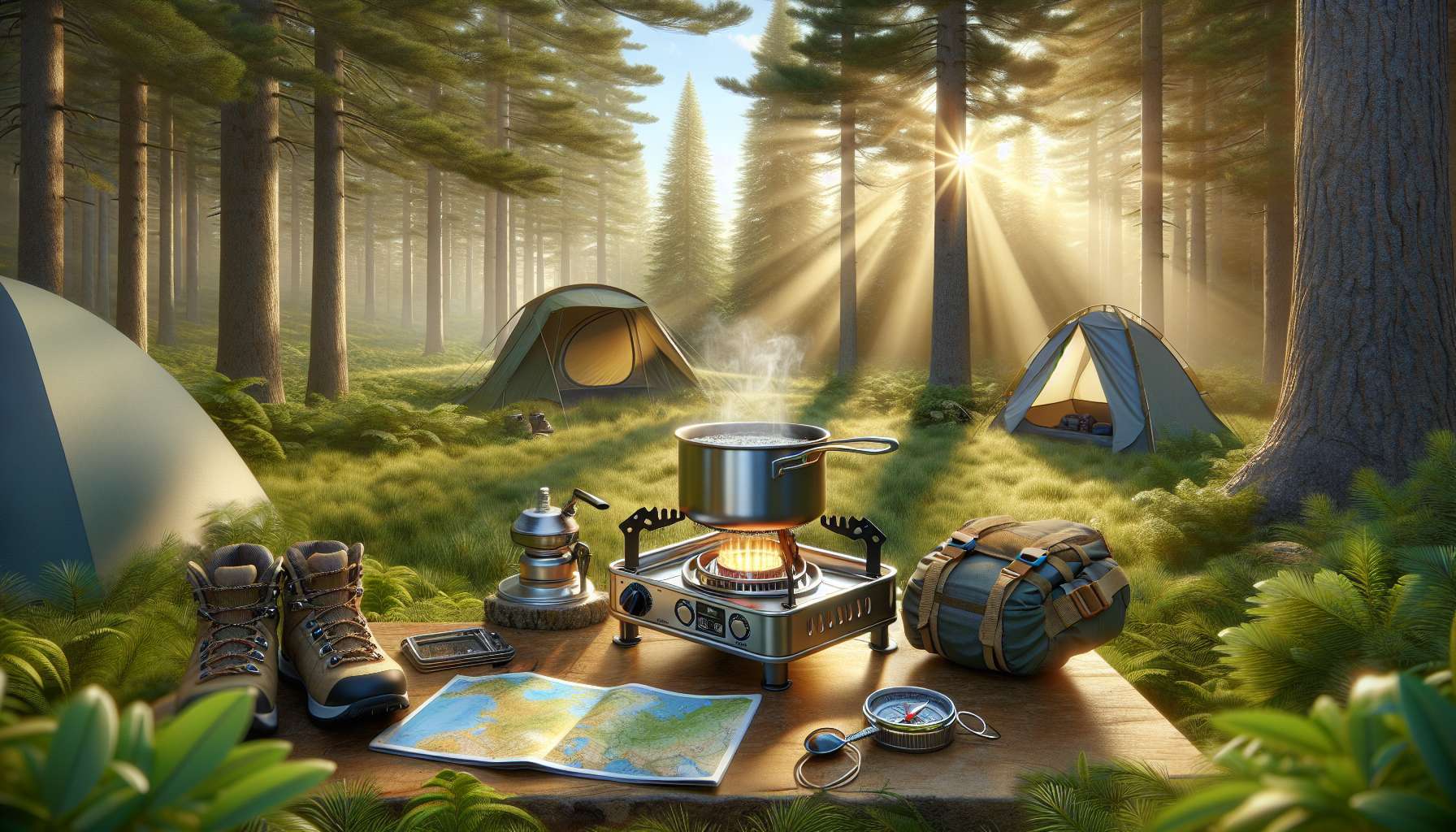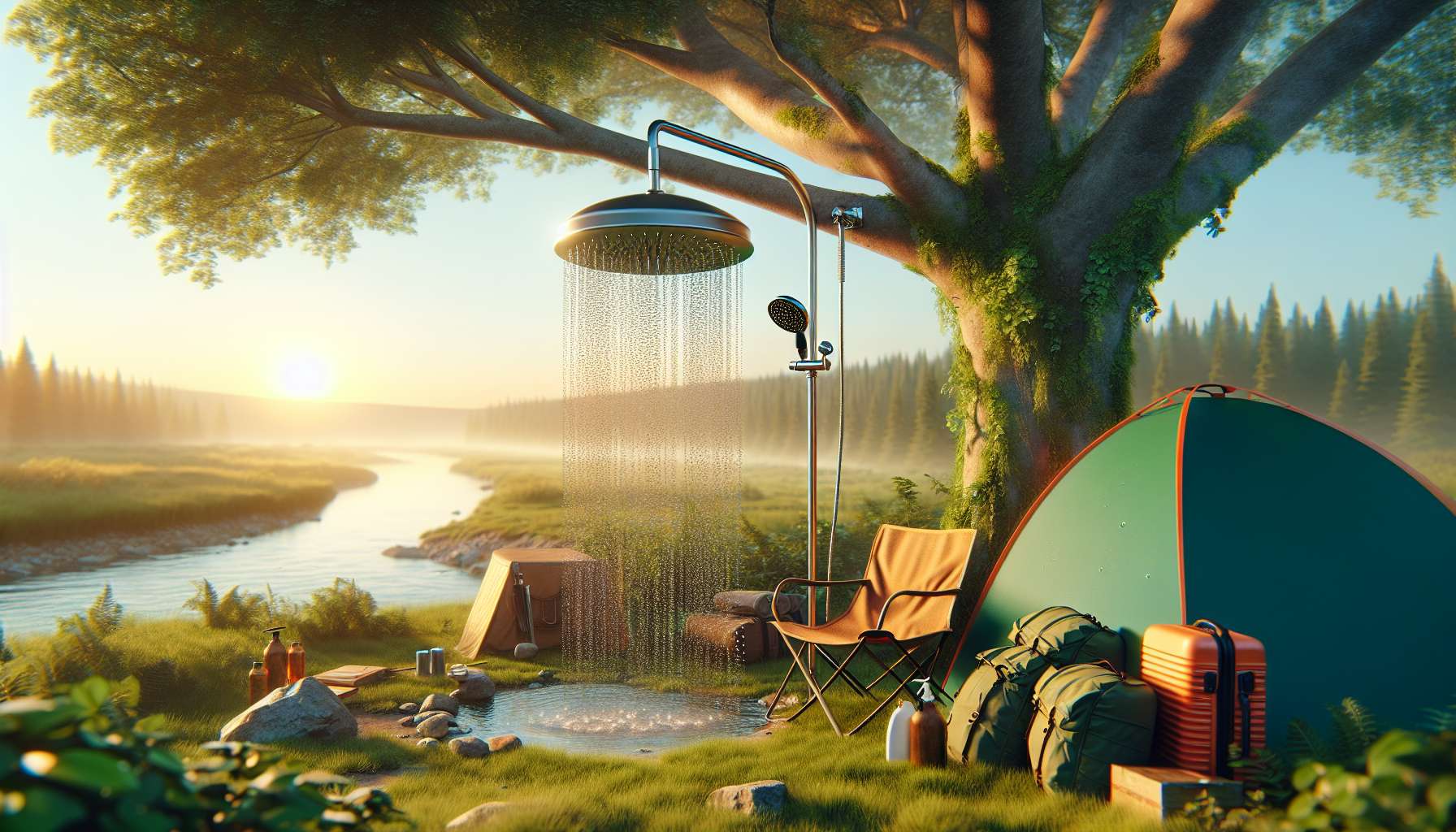Camping Stoves: A Comprehensive Guide to Outdoor Cooking
When it comes to outdoor adventures, camping stoves play a crucial role in providing hot meals, boiling water, and creating a cozy atmosphere in the wilderness. Whether you’re a seasoned camper or a novice explorer, understanding the ins and outs of camping stoves can enhance your outdoor experience. In this article, we will delve deep into the world of camping stoves, exploring their history, types, features, and tips for optimal use. So, grab your favorite mug, sit back, and let’s ignite the flame of knowledge!
The Evolution of Camping Stoves
Before we dive into the specifics of camping stoves, let’s take a trip back in time to explore their fascinating history. The concept of portable stoves for outdoor cooking dates back centuries, with early designs ranging from simple fire pits to intricate metal contraptions. In the 19th century, the invention of the “camp stove” revolutionized outdoor cooking, offering a more efficient and controllable way to cook in the wilderness.
Over the years, camping stoves have evolved significantly, incorporating advanced technology, lightweight materials, and innovative designs. Today, campers can choose from a wide array of stoves, each catering to different needs and preferences. From compact backpacking stoves to powerful multi-burner setups, the options are endless.
Types of Camping Stoves
When it comes to choosing a camping stove, the options can be overwhelming. To help you navigate through the sea of choices, let’s explore some of the most common types of camping stoves:
1. Backpacking Stoves
Designed for hikers and minimalist campers, backpacking stoves are lightweight, compact, and easy to carry. These stoves typically use small canisters of fuel, such as propane or butane, and are ideal for solo or small group trips. Backpacking stoves come in various styles, including canister stoves, liquid fuel stoves, and wood-burning stoves.
2. Propane Stoves
Propane stoves are popular among car campers and RV enthusiasts due to their convenience and ease of use. These stoves use disposable propane canisters or refillable tanks to fuel the burners, providing a reliable source of heat for cooking. Propane stoves come in single-burner and multi-burner configurations, offering flexibility for different cooking needs.
3. Liquid Fuel Stoves
Liquid fuel stoves, such as white gas stoves, are known for their high heat output and reliability in extreme conditions. These stoves use liquid fuel, which is pressurized and vaporized before igniting, making them suitable for cold weather camping. Liquid fuel stoves are favored by mountaineers, winter campers, and expedition enthusiasts for their performance and versatility.
Features to Consider
When selecting a camping stove, there are several key features to consider to ensure you choose the right one for your needs:
1. Fuel Type

The type of fuel a camping stove uses can impact its performance, cost, and environmental footprint. Common fuel types include propane, butane, white gas, alcohol, and wood. Consider the availability of fuel, burn time, boil time, and ease of use when selecting a stove based on fuel type.
2. Burner Configuration
Camping stoves come in various burner configurations, including single-burner, dual-burner, and multi-burner setups. The number of burners affects the cooking capacity and versatility of the stove. Choose a burner configuration based on the size of your group, cooking style, and meal requirements.
3. Weight and Portability
For backpackers and hikers, the weight and portability of a camping stove are critical factors to consider. Lightweight stoves that fold down into a compact size are ideal for on-the-go adventures. Pay attention to the overall weight, dimensions, and ease of transport when selecting a portable stove.
4. Ignition System
Some camping stoves come with built-in ignition systems, such as piezo igniters, which eliminate the need for matches or lighters. An easy-to-use ignition system can simplify the cooking process and provide added convenience when lighting the stove in challenging conditions.
Expert Opinions on Camping Stoves
According to outdoor gear expert Sarah Miller, “Choosing the right camping stove can make a significant difference in your outdoor cooking experience. Consider factors such as fuel type, burner configuration, and weight to find a stove that meets your needs.” Miller recommends conducting thorough research and testing different stoves before embarking on a camping trip.
Common Misconceptions About Camping Stoves
One common misconception about camping stoves is that they are only necessary for extended wilderness expeditions. In reality, camping stoves can be used for a wide range of outdoor activities, including picnics, beach outings, tailgating, and backyard barbecues. Investing in a quality camping stove can enhance your outdoor cooking options and create memorable experiences with friends and family.
Comparative Analysis of Camping Stoves
When comparing camping stoves, it’s essential to consider factors such as fuel efficiency, boil time, simmer control, wind resistance, and durability. Conducting a side-by-side analysis of different stoves can help you identify the best option for your specific needs and preferences. Look for reviews, ratings, and user feedback to gain insights into the performance and reliability of various camping stoves.
FAQs About Camping Stoves
Q: Can I use a camping stove indoors?
A: It is not safe to use most camping stoves indoors due to the risk of carbon monoxide poisoning and fire hazards. Always use camping stoves in well-ventilated outdoor areas to prevent accidents and ensure your safety.
Q: How do I clean and maintain my camping stove?
A: To clean and maintain your camping stove, follow the manufacturer’s instructions for proper care. Regularly clean the burners, fuel lines, and ignition system to prevent clogs and ensure optimal performance. Store your stove in a dry, secure location when not in use to extend its lifespan.
To Wrap Things Up
As we conclude our exploration of camping stoves, we hope you’ve gained valuable insights into this essential outdoor gear. Whether you’re embarking on a backcountry adventure or enjoying a weekend camping trip, a reliable camping stove can elevate your outdoor cooking experience. Remember to consider factors such as fuel type, burner configuration, weight, and portability when choosing a camping stove that meets your needs. So, pack your gear, gather around the campfire, and savor the flavors of the great outdoors with a trusted camping stove by your side.
Happy camping!




